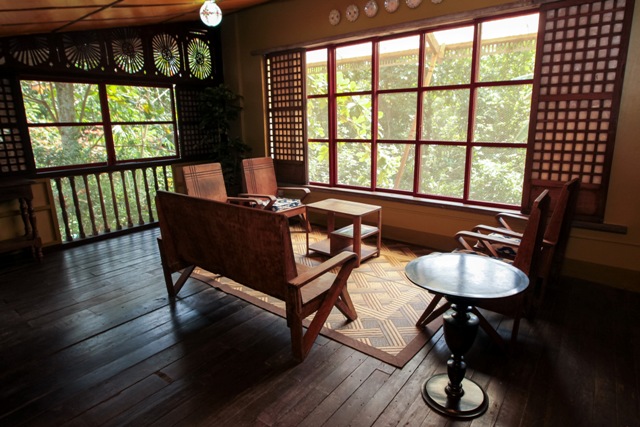
Shrubs of Medinilla magnifica bearing clusters of droopy blooms explode out of garden beds. Birds of paradise, ficuses, crotons and bromeliads burst amid the background of fruit trees. Vines of ilang-ilang and thunbergias thread up into the trellises. Acacia, lanzones and guava trees tower above the landscape.
Visitors feel like they are in paradise at PatisTito Garden in San Pablo, Laguna. Part of its charm are the structures salvaged from ancestral homes, much like the pastiches of fabrics and embroidered designs the owner, designer Beatriz “Patis” Tesoro, are known for.
Weary of the pollution in Metro Manila, Tesoro and husband Tito settled in the quaint town of San Pablo. Their haven, Patis Tito Garden, has become a destination restaurant for its native cuisine, and a modest bed-and-breakfast place for travelers who want to explore the Southern Tagalog region.
Retirement isn’t in Tesoro’s mind right now. Her atelier for her modern Filipiniana is adjacent to the restaurant. She is also slowly turning the haven into a cultural destination and a learning center for arts and crafts.
Organic fabrics
A proponent of indigenous textiles and crafts, she has been collaborating with weavers to produce organic fabrics. When there’s a Filipiniana event, Tesoro is one of the go-to designers of Manila’s high-society women. They appreciate the modern interpretations of piña and customized fabrics made by artisans employing ethnic embroidery traditions.
Recognizing her contributions to reviving our native crafts tradition, the Festival International des Textiles Extraordinaires (FITE), an international program that celebrates heirloom fabrics and their future, invited Tesoro to Clermont-Ferrand, France, in 2013. FITE aims to bring together artisans, textile and fashion designers, weavers, artists and collectors, and the public to appreciate textiles in connection with heritage and contemporary art.
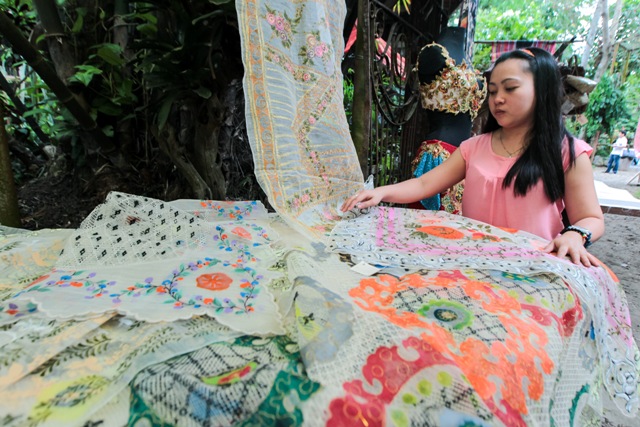
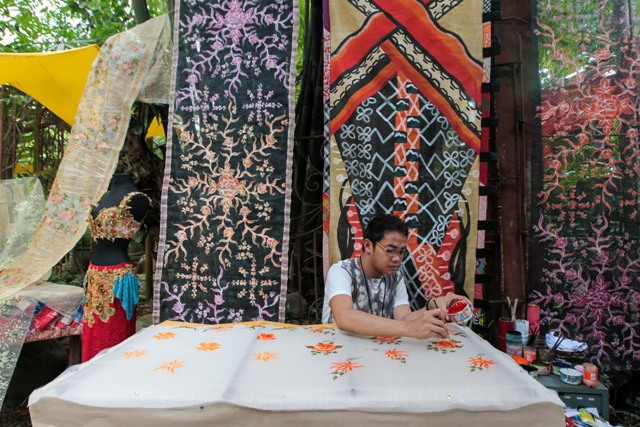
In the FITE event, Tesoro was one of the Asian designers who showed how traditional fabrics are relevant to modern fashion.
After the trip, she was inspired to make PatisTito Garden Café a place to hold culture workshops.
Her first foray was a mini-cultural fair and embroidery exchange between the Tingguians from Abra and the burdaderas from Lumban, the embroidery capital of the Philippines. The fabric base was white cotton from Abra merged with Tesoro’s piña, and fused with the animistic and geometric embroideries of the ethnic group and the delicate floral patterns from the burdadera.
Backyard industry
Tesoro explained that the Tingguians had been her suppliers for over 30 years. Their craft is handed down from generation to generation. However, many Gen Y and millennial Tinggians have no interest in continuing the tradition, lured by better-paying jobs in the cities.
“The Tingguians don’t have access to good threads. I gave them four kilos of cotton, but the people who used to process them into threads have died. We have to look for mentors to keep the tradition alive,” said Tesoro.
In Lumban, embroidery is a backyard industry. This little town supplies the famous callado or embroidered mesh for the barong Tagalog. However, the locals work at their pace, making it difficult for entrepreneurs who have to follow delivery deadlines.
“This is why I’m putting up a school for creativity. It’s not a regular school. I just hope to raise awareness for more cultural exchanges,” said Tesoro.
Plans are afoot to collaborate with FITE to organize activities to get people interested in crafts revival and take them to the 21st century. The PatisTito Garden Café could offer workshops on visual arts, cuisine, fabric creation and dyeing techniques.
“The French have a vision that if designers continue to innovate using these indigenous fabrics, then the demand would keep the fabric traditions alive,” said Tesoro.
The designer said she would be presenting modern interpretations of the piña next at the Museo Nacional de Antropologia in Madrid in May.
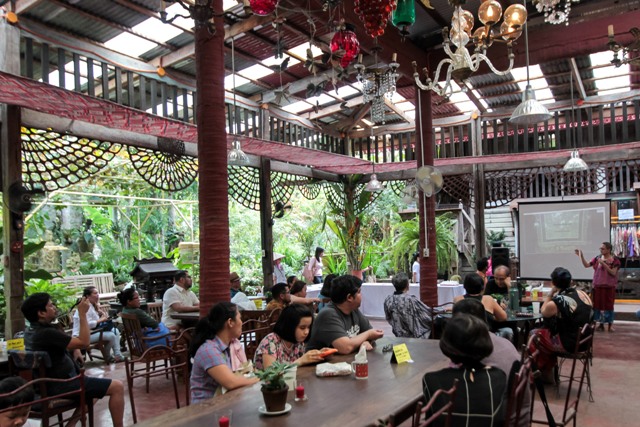
Woven fabric
Walking her talk, Tesoro wore a kimona with floral cutouts and a skirt made from Miag-ao patadyong, the checkered woven fabrics from a town of the same name in Iloilo, at the cultural fair where she explained how the barong is made, tracing its evolution from the plant to the textile processing and the embroidery.
The cultural fair also featured products from the Tesoros’ organic farm in Tiaong, Quezon, such as radish, tomatoes, cassava, plantains, papaya and chayotes. There were eggs from Victoria, Laguna, and oyster mushrooms from Dolores, Quezon, and organic honey from Palawan.
Tesoro is proud that the caretakers of their farm in Quezon are growing their own crops and selling them. Some even make kakanin or native delicacies. The Tesoros have become suppliers of lemongrass, screwpines and coconut to Villa Escudero.
Her most recent project is cultivating cotton trees for fabrics.
Unique products
The cultural fair also offered unique products. Papier maché animals from Laguna were painted in the baroque patterns found in Tesoro’s designs. Tesoro’s assistant, Raymond Cruz, demonstrated painting on fabrics. Panels of silk painted with flowers and the native alphabet cascaded from tree branches.
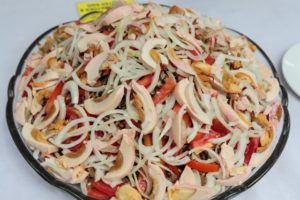
On display were embroidered, appliquéd and beaded clothes, reminiscent of dazzling ’80s fashion. Vendors sold embroidered fans, wallets, ethnic woven belts, woven mats and piña and organic personal care products.
Even with no scheduled activity around, PatisTito Garden welcomes visitors for its heirloom cuisine. The fiddlehead fern salad is a favorite, along with the kinulob na manok, chicken simmered in a banana leaf-covered clay pot, enhanced with Spanish chorizo, potato and onion; pinangat na tilapia, fish stewed in coconut milk; and shrimp kare-kare.
Vegetarians can partake of Laguna’s kulawong talong, or smoked eggplant.
The life of the place was the happy couple. Tito always regaled guests with stories and his wit. Yet despite his jolly countenance, he had a lingering heart problem that was aggravated by his weight problem. He died of complications in San Pablo after Easter.
Tesoro plans to put up a cemetery in one of their properties.
For details, e-mail [email protected]; visit www.patistito.com; message through Facebook page Patis Tito Garden Café; or text 0998-5443728.








































